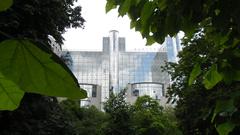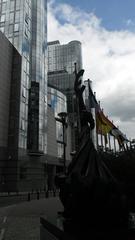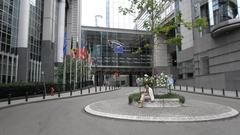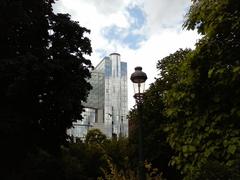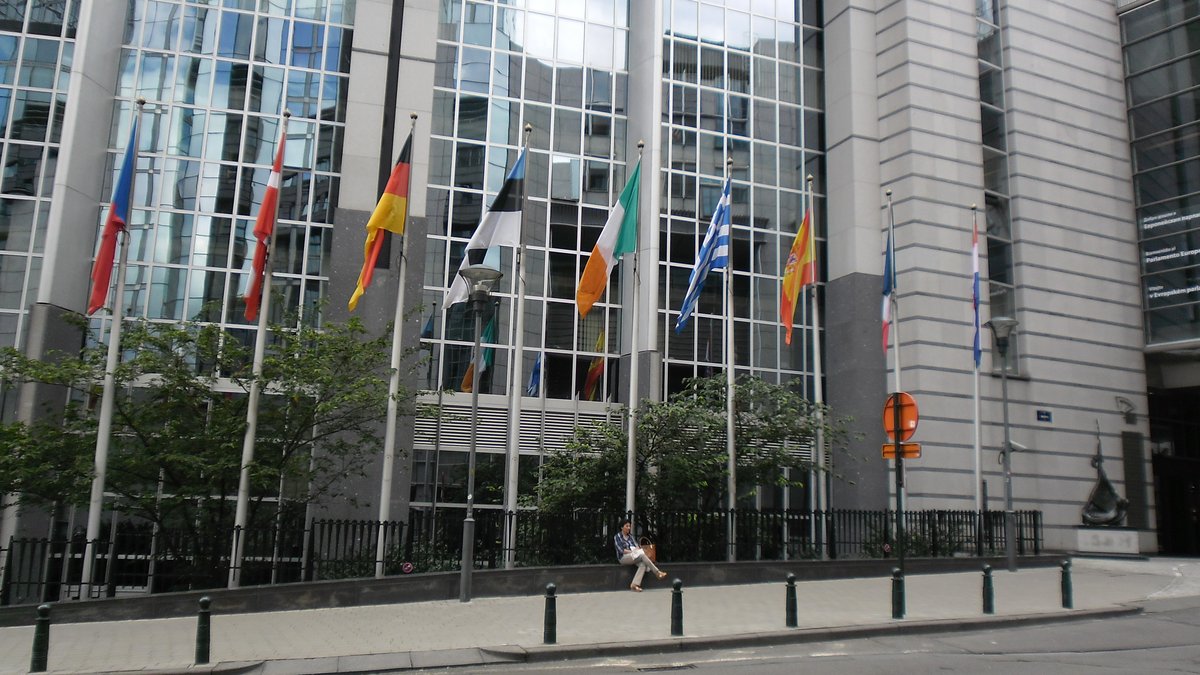
Espace Léopold Brussels Visiting Hours, Tickets, and Travel Guide
Date: 14/06/2025
Introduction
Espace Léopold, set in the heart of Brussels’ European Quarter, is the principal complex of the European Parliament in Brussels, Belgium. As both an architectural landmark and a symbol of European democracy, the site offers visitors a unique convergence of history, politics, culture, and design. With its iconic buildings—including the Paul-Henri Spaak, Altiero Spinelli, and Eastman (House of European History)—Espace Léopold embodies the European Union’s ideals of transparency, unity, and civic engagement.
This detailed guide provides essential information on Espace Léopold’s visiting hours, ticketing procedures, accessibility, architectural highlights, and practical travel tips. Whether you are a political enthusiast, architecture admirer, or a visitor exploring Brussels’ historical sites, Espace Léopold offers a comprehensive and immersive experience. For the latest updates, consult the official European Parliament visitor page, Planergo, and Wikiwand’s Espace Léopold page.
Table of Contents
- History and Origins
- Key Buildings and Architectural Significance
- Symbolism, Social and Cultural Impact
- Visitor Information: Hours, Tickets, and Accessibility
- What to See and Do: Highlights and Visitor Experience
- Practical Tips for Visiting
- Nearby Attractions
- Frequently Asked Questions
- Sources and Further Reading
History and Origins
The origins of Espace Léopold reflect the evolution of European integration. The initial concept arose from the growing need for a central legislative space following the establishment of the European Coal and Steel Community in 1952, which evolved through the European Economic Community and ultimately the European Union. As the EU’s membership and legislative scope expanded, Brussels was chosen for its strategic location and political significance (Digital News Report). While Strasbourg remains the Parliament’s official seat, the bulk of legislative work now takes place in Brussels, making Espace Léopold the true heart of European parliamentary activity (Planergo).
Construction began in the late 1980s, with the main phases completed by 1995. Architectural input came from a consortium of Belgian and European architects, aiming for a blend of postmodern and contemporary design that symbolizes European ideals (Monument Heritage Brussels).
Key Buildings and Architectural Significance
Paul-Henri Spaak Building (PHS)
Completed in 1993 and named after a founding father of the EU, the PHS is the centerpiece of Espace Léopold. Its oval glass façade and expansive atrium are designed to embody transparency and openness, while the hemicycle—capable of seating over 600—hosts the Parliament’s primary debates and events (Architectural Record). The building also houses the President’s office, press center, and several committee rooms. Notably, the interior features innovative woven stainless steel walls to maximize light and openness (TripByTrip). A prominent bronze statue, “Europe” by May Claerhout, stands at the entrance, symbolizing unity (Wikiwand).
Altiero Spinelli Building
As the largest structure in the complex, the Spinelli Building was constructed between 1991 and 1997 to provide office space for MEPs, committee rooms, and numerous public amenities. Its design emphasizes functionality, accessibility, and flexibility, with modular offices and a range of meeting spaces. The building is seamlessly linked to PHS and features artworks from the Parliament’s extensive collection, reflecting cultural diversity (Wikiwand).
Eastman Building / House of European History
Originally built in 1935 as a dental clinic, the Eastman Building was repurposed in the 1980s and now houses the House of European History, opened in 2017. The renovation maintains its Art Deco heritage and integrates modern museum spaces, offering exhibitions on Europe’s history and integration (European Parliamentary Research Service).
Additional Structures
- Willy Brandt & József Antall Buildings: Added in 2008 for additional MEP offices, connected to Spinelli by the transparent Konrad Adenauer footbridge. The Antall Building provides direct access to the Brussels-Luxembourg train station (Wikiwand).
- Atrium I & II: House Parliament’s committee secretariats and offices.
- Remard & Wiertz Buildings: Serve as additional office and childcare facilities.
- Delors Building: Now hosts the Economic and Social Committee and the Committee of the Regions.
Symbolism, Social and Cultural Impact
Espace Léopold stands as a powerful symbol of European unity, inclusion, and democratic governance. Its transparent architecture and public spaces encourage citizen participation and foster a sense of ownership over the legislative process (Evendo). The complex is not only a workplace for thousands of EU officials but also a cultural hub—hosting art collections, exhibitions, and public events. The House of European History further deepens the site’s significance by presenting the continent’s multifaceted past and the journey toward integration (European Parliamentary Research Service).
Located within a multicultural neighborhood, Espace Léopold is surrounded by cafés, green spaces, and local amenities, blending the “European bubble” with the broader urban fabric of Brussels (visit.brussels).
Visitor Information: Hours, Tickets, and Accessibility
Visiting Hours
- European Parliament Hemicycle: Monday to Friday, 9:00 AM – 6:00 PM. Access varies with the parliamentary calendar; check the official website for updates.
- Parlamentarium (Visitor Centre): Open daily, 9:00 AM – 6:00 PM on weekdays; 10:00 AM – 6:00 PM on weekends (World by Weekend).
- House of European History: Open daily 10:00 AM – 5:00 PM, closed Mondays.
Tickets and Admission
- Entry: Free to all main attractions (Parliament, Parlamentarium, House of European History).
- Booking: Advance booking is strongly recommended for tours and group visits, especially during plenary sessions or peak tourist periods. Walk-ins are accepted if capacity allows.
Security and Entry
- Entry is via the Parlamentarium or designated visitor entrances.
- Expect airport-style security screening; bring a valid photo ID.
- Large bags and backpacks are not permitted.
Accessibility
Espace Léopold is fully accessible to visitors with reduced mobility, offering elevators, ramps, accessible restrooms, tactile exhibits, and audio descriptions. Staff assistance is available upon request (World by Weekend).
Getting There
- Public Transport: Brussels-Luxembourg station is integrated into the complex; Maelbeek/Maalbeek metro station and several bus/tram lines serve the area.
- By Car/Bike: Limited paid parking is available. Bike lanes connect to the European Quarter (Touristlink).
What to See and Do: Highlights and Visitor Experience
Parlamentarium
The interactive visitor centre features multimedia exhibits, touchscreens, and immersive experiences in 24 EU languages. Highlights include simulations of parliamentary debates and insight into the legislative process. Most visitors spend 1–2 hours here.
Hemicycle Visits
Guided tours offer a behind-the-scenes look at the main debating chamber, with multilingual audio guides available. When Parliament is in session, visitors can observe live debates (Wikiwand).
Art and Cultural Features
Espace Léopold houses more than 360 artworks representing EU member states. The House of European History offers exhibitions on Europe’s past and integration (Wikiwand).
Esplanade of the European Parliament
This landscaped pedestrian avenue, lined with sculptures and benches, serves as the main public thoroughfare and hosts events, demonstrations, and cultural activities.
Family and Group Visits
The site is family-friendly, with exhibits for children and educational programs. Group visits should be booked in advance (World by Weekend).
Practical Tips for Visiting
- Language: Materials are available in 24 EU languages; staff are multilingual.
- Dress Code: Smart casual attire is recommended.
- Photography: Allowed in most public areas, but not with flash or tripods.
- Food & Drink: No cafés in the complex; nearby Place du Luxembourg offers many dining options (Visit Brussels).
- Security: Allow extra time for screening; be mindful of personal belongings (Lonely Planet).
- Best Times: Weekdays during plenary sessions for political action; weekends for museums and a quieter atmosphere.
Nearby Attractions
- Parc Léopold: Adjacent green space, ideal for a stroll or picnic (spottedbylocals.com).
- Museum of Natural Sciences: Renowned for its dinosaur gallery, minutes away.
- Place du Luxembourg: Lively square with cafés and bars (bruxellessecrete.com).
- European Commission HQ (Berlaymont Building): A short walk from Espace Léopold (theinvisibletourist.com).
Frequently Asked Questions (FAQs)
Q: What are the visiting hours?
A: The European Parliament is generally open Monday–Friday, 9:00 AM–6:00 PM; the Parlamentarium is open daily, with slightly shorter weekend hours.
Q: Is entry free?
A: Yes, all main attractions—including the Parliament, Parlamentarium, and House of European History—are free to visit.
Q: Are guided tours available?
A: Yes, in multiple languages. Advance booking is recommended.
Q: Is the site accessible for people with reduced mobility?
A: Yes, with elevators, ramps, and adapted facilities.
Q: How do I get there by public transport?
A: Brussels-Luxembourg station is integrated into Espace Léopold; several metro, bus, and tram lines serve the area.
Sources and Further Reading
- Digital News Report
- Wikiwand’s Espace Léopold page
- World by Weekend
- Visit Brussels: The European Quarter
- Architectural Record
- European Parliamentary Research Service
- Planergo
- TripByTrip
- Evendo
- Touristlink
- Happy to Wander
- Visit Brussels: Summer in Brussels
- Lonely Planet
- Spotted by Locals - Parc Léopold
- Bruxelles Secrète
- The Invisible Tourist

